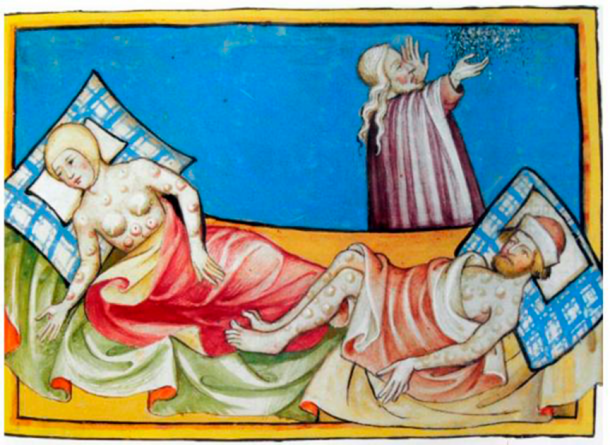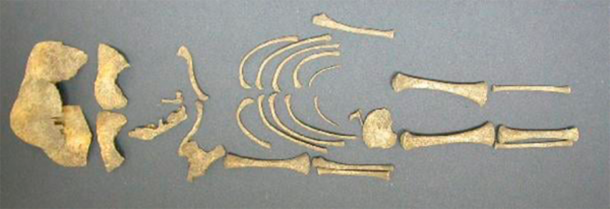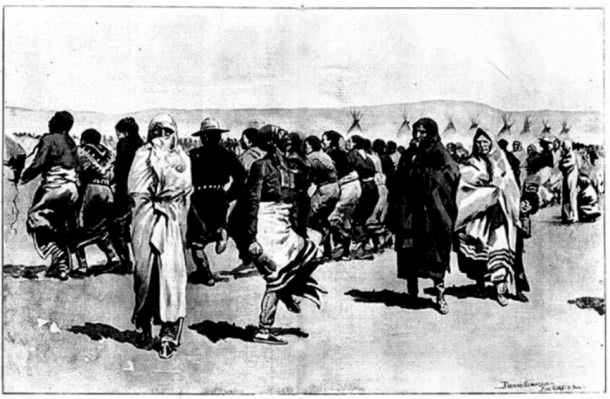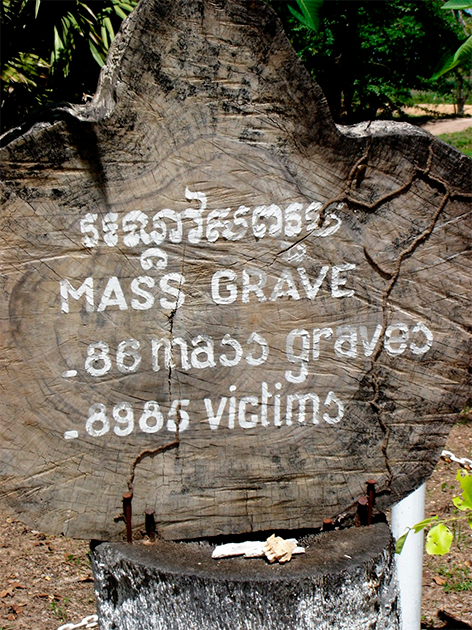From ancient times to the present day, mass graves have been a haunting reminder of the atrocities that human beings can inflict upon each other. These graves, containing the remains of countless individuals, bear witness to the horrors of war, genocide, disease, and political violence. Some of these graves have been intentionally hidden, while others were left out in the open, serving as a grim reminder of the brutality of the past. Despite the tragedy they represent, mass graves continue to be discovered around the world, shedding light on the darkest moments of human history. In this article, we will explore some of the most infamous and fascinating mass graves throughout history.
1.Olympic Mass Graves – Vikings Executed
Many sites, including mass graves, are found during modern construction work. In 2009 a mass grave was found in Weymouth, England when construction workers were building a relief road for the then-upcoming 2012 London Olympics.
Unsurprisingly, questions were asked when the workers made this macabre discovery. Who did the bodies belong to and how did they get there? Experts were brought in to investigate the bodies. An examination of the teeth revealed that the skeletons didn’t belong to Britons or Saxons.
They were actually the bodies of Scandinavian Vikings , believed to have been killed and buried at some point between 910-930 AD. The skulls found at the site had sword marks on their jaws and upper spines, and their heads had been cut off and placed neatly beside their corpses.
This led historians to believe the men had been executed, most likely as prisoners of war. All in all, the bodies of 51 headless Vikings were found buried there, all male. Testing indicated that most of them died in their late teens/early 20s. A total lack of clothing, weapons, or jewels indicates the poor boys were buried naked.

Headless Scandinavian Vikings buried in mass grave. U.K. (Simon Fraser University/ CC BY 2.0 )
2.Paris Mass Grave – A Plague Pit
Construction workers should really charge more when working in historical areas. In 2015 archaeologists were brought in when construction workers found more than 200 human bodies beneath the cellar of a Monoprix store in Paris.
In total eight graves were found at the site. Most of the graves contained around 20 bodies each, but one contained at least 150. It’s believed that if the team had kept digging, they may have found even more.
As it turns out, the Monoprix store had been built on the site of an ancient hospital (second in creepiness only to an old Indian burial ground) known as the “Hospital de la Trinite”. The hospital had operated between the 12th and 17th centuries, leading historians to conclude the bodies probably belonged to a mass epidemic, perhaps the plague that struck Paris between the 14th and 16th centuries.

The deadly Black plague that hit medieval Europe. Many bodies were unearthed under the city of Paris. Illustration Toggenburg Bible (1411) ( Public domain )
3.Uffizi Gallery Mass Grave – Another Plague Pit
A mass grave found under the Uffizi gallery in Florence tells a similar tale to the one found in Paris – it’s just much older. In 2014 workers found a 1500-year-old mass grave under the gallery containing over 60 bodies.
The grave was dated to the 5th century AD thanks to coins found on the bodies that dated to the period. The confusing part, at first, was the cause of death. The bodies bore no injuries like burns or scars and there were no signs of malnutrition. This led archaeologists to discount war, famine, or any kind of violence.
The answer lay in the fact that most of the bodies were buried at roughly the same time. It’s believed they were the victims of an early pandemic, likely an early form of the Black Death (which later decimated populations in the 14th century). While only 60 bodies were initially discovered, it’s feared that further digging could turn up hundreds, perhaps even thousands more.
Of course, it isn’t just nature that’s cruel. Humans have a long history of indiscriminate slaughter. In 1361, the Danish King, Valdemar IV , invaded Gotland Island , located in the Baltic Sea. The island was known for being incredibly diverse and wealthy. Even better, it had no army, relying on the king of Sweden for protection.
When the Danes attacked in 1361, that protection was nowhere to be found. A group of local peasants put up a valiant fight but were slaughtered by the well-trained Danes. The fighting didn’t last long, and Gotland quickly surrendered to prevent further killing.
But just how many peasants died at Danish hands? Well in 1905 an archaeologist called Oscar Wennersten discovered a grave containing roughly 300 bodies just outside of the island’s biggest city, Visby. Between 1909 and 1928 several more digs were conducted, digging up 1,185 bodies from two mass graves.
5.Forgotten Army in Yorkshire – Sickly Parliamentarians
In 2008 several mass graves were found a stone’s throw away from the city walls of Yorkshire, England . The graves were filled with the bodies of 113 men, believed to have belonged to soldiers fighting for the Parliamentarians during the English Civil War of 1642 to 1651.
The men had most likely taken part in the 1644 Siege of York. Interestingly, the soldiers hadn’t been killed in battle. Tests showed they had died of disease, probably typhus, which was common and highly contagious.
It’s believed they were Parliamentarians due to where their bodies were found. The skeletons were found along the city walls, where it’s known the Parliamentarian army camped during the siege. The skeletons had also been treated with dignity. They were packed in well-arranged rows, lying face down. 87 of the skeletons were confirmed to be men, most of them aged around 35-49.
6.Buckinghamshire Roman Brothel – Infant Mass Grave
The discovery of any ancient mass grave can be harrowing, but the discovery of an infant mass grave . That’s really disturbing.
During some periods of Roman history, infanticide was not uncommon. It was traditional for a newborn to be brought before the pater familias (the oldest living male in the family) who decided whether the child was to be kept or left outside to die of exposure. The Twelve Tables of Roman law even obliged the patriarch to kill any child which was born visibly deformed. Children could also be killed if the family couldn’t afford to feed them, or if the mother was a slave/ prostitute.
This all leads us to the macabre discovery of a child mass grave in 1912 in Buckinghamshire, England by the archaeologist Alfred H. Cocks during the excavations of a large Roman villa. Bizarrely, Cocks was largely disinterested in the bodies he found and failed to investigate them, leaving them where he found them.
It wasn’t until 2008 when another archaeologist, Dr. Jill Eyers, found Cocks’s old reports and photographs in a museum archive that any kind of investigation began. Further examinations found around 140 babies that had been buried between 150-200 AD. All the bodies were found to have died at around 40 weeks gestation, soon after birth. This indicated infanticide rather than some kind of pandemic.

An infant’s skeleton found at the Hambleden Roman infanticide mass burial site. An analysis of the remains from 35 infants revealed they were most likely killed at birth. ( English Heritage )
Eyers and her colleagues originally believed the babies were buried by prostitutes working in a brothel. This was not uncommon in Ancient Rome, falling pregnant came with the job but prostitutes couldn’t afford to lose income.
This theory was later challenged, however. The infant bodies found at the site are an almost equal ratio of boys to girls. Roman brothels usually killed male infants but kept the females for “later recruitment”. This indicates that the site may not have been a brothel at all. Sadly, without further evidence it’s likely we’ll never know why the poor children died.
7.Wounded Knee Mass Graves- A Tragic Misunderstanding
December 29, 1890, saw one of the bloodiest battles in American history, the Wounded Knee Massacre. The incident occurred at Wounded Knee Creek, located on the Pine Ridge Indian Reservation in South Dakota.
The U.S. Army’s Seventh Regiment encountered a group of Lakota Sioux Native Americans who were conducting a Ghost Dance, a type of ceremony that they believed summoned the spirits of their ancestors and protected them from harm.
Sadly, the dance did the exact opposite. The army took the dance as a threat to their control and surrounded the group. A scuffle soon broke out and in the ensuing chaos, the U.S. soldiers opened fire on the unarmed Native Americans.
Over 200 men, women, and children, many of whom were running away, were killed. Three days later the army hired local civilians to bury the Lakota dead. A mass grave was dug on top of a nearby hill and the bodies were dumped within.

The Ghost dance by the Oglala Lakota at Pine Ridge Agency-Drawn by Frederic Remington from sketches taken on the spot. ( Public Domain )
8.Las Llamas- Child Sacrifices
The Chimu Empire Mass Grave, also known as Las Llamas , is a unique archaeological site discovered in present-day Peru that dates back to the 15th century AD. The Chimu Empire was a powerful civilization that existed along the coast of Peru from about 900 AD to 1470 AD, when it was conquered by the Inca Empire.
The mass grave was discovered in a region known as Huanchaco, near the modern city of Trujillo. Containing the remains of over 140 children, it is believed to be the largest mass grave of children ever found. The children’s bodies were found buried in a sand dune, accompanied by the remains of several llamas, which were also ritually sacrificed .
The children ranged in age from 5 to 14 years old, and many of them had been carefully prepared for the sacrifice, with their hair braided and dressed in fine clothing. The Chimu believed that the sacrifice of children and animals would appease their gods and bring good fortune to their civilization.
The children’s rib cages had been forcefully opened and archaeologists believe their hearts were likely removed. Evidence of human sacrifice in this region is relatively rare and it is believed this mass sacrifice was carried out due to an earlier climatic event, probably El Niño-Southern Oscillation, which periodically causes coastal flooding.
9.Cuello, Belize – Maya Massacre
The mass grave at Cuello, Belize is an archaeological site located in the northern part of the country, near the border with Mexico. It dates back to around 600 BC, making it one of the earliest known examples of large-scale violence in the Maya world.
The site was discovered in the 1970s by archaeologist Norman Hammond, who excavated the remains of more than 100 individuals. The bones showed signs of violent trauma, such as skull fractures and projectile wounds, indicating that they had been killed in a conflict.
It is believed that the victims were members of the local Maya population who were caught up in a violent conflict between rival groups. The conflict may have been sparked by competition for resources, such as land and water, or by a desire for power and control.
The discovery of the mass grave has shed light on the early history of the Maya civilization , and the violence and conflicts that characterized their society.
10.Twentieth-Century Mass Graves
Sadly, it is impossible to write about the history of mass graves without mentioning the 20th century. Any one of the following examples dwarves the scale of the mass graves mentioned earlier in this list.
Take for example, that between 1975 and 1979, the Khmer Rouge regime in Cambodia killed an estimated 1.7 million people, burying their bodies in mass graves known as the “killing fields’. Or, the Nanjing Massacre Mass graves that arose when Japanese forces killed an estimated 300,000 Chinese civilians in Nanjing, China, once again burying their bodies in mass graves.

The Killing Fields. Phnom Penh, Cambodia (@felixtriller/ CC)
Then, there’s Stalin’s Mass graves, when during the Soviet era, Stalin’s regime killed millions of people, burying their bodies in mass graves across Russia. This isn’t to mention the mass graves dug by the Nazis after they “perfected” mass slaughter on an industrial scale during the holocaust, killing an estimated 6 million Jews as well as other “undesirables”.
Conclusion
The tragic fact is that there are too many examples of mass graves from the 20th century to list here. The 20th century saw an unprecedented number of mass graves dug all over the world, from the horrors of the Holocaust and the Killing Fields of Cambodia to the more recent atrocities in Rwanda and Bosnia. The total number of victims buried in these graves is difficult to estimate, but it is likely in the millions.
While the discovery and investigation of these graves can help bring some closure to the families of the victims, it also serves as a stark reminder of the horrors of war, genocide, and political violence. We like to believe that we are more enlightened, wiser, and developed than our ancient ancestors. But if the history of mass graves teaches us anything, it’s that we have a long way to go.








